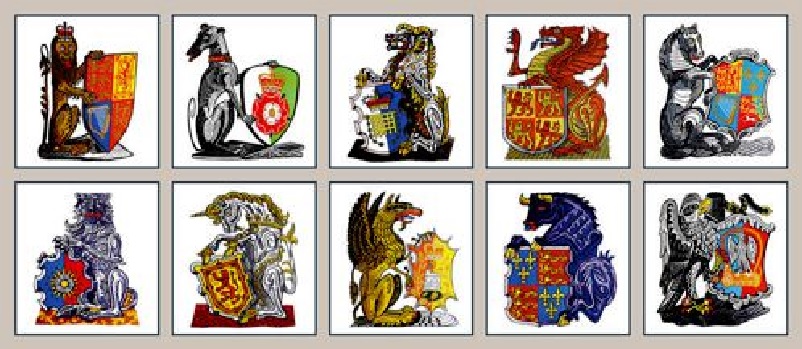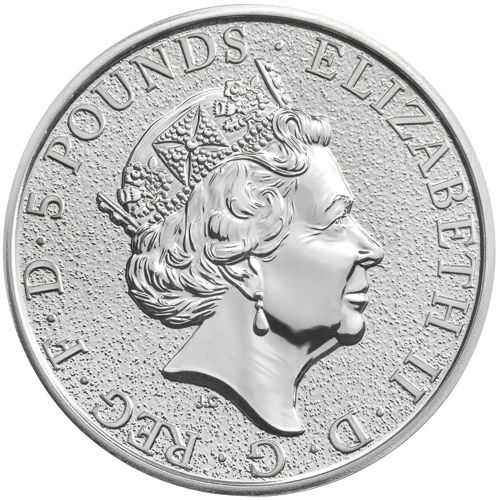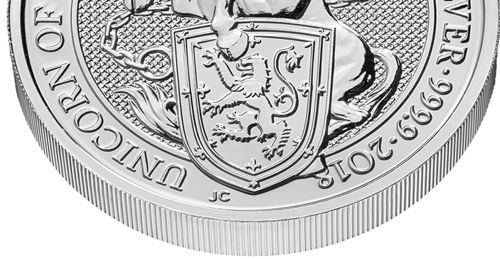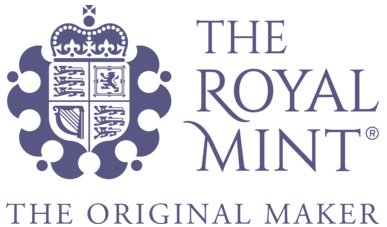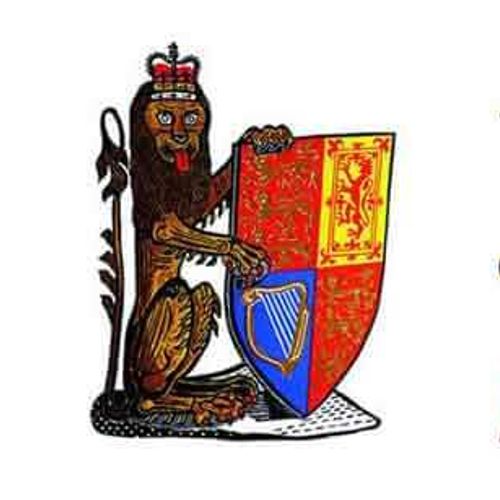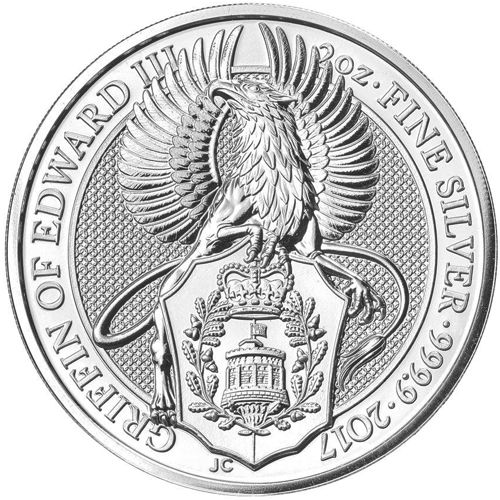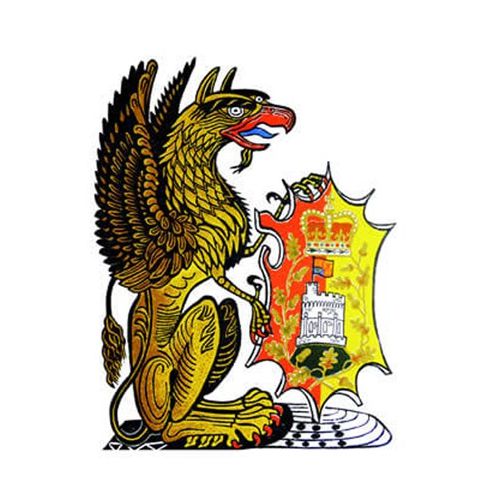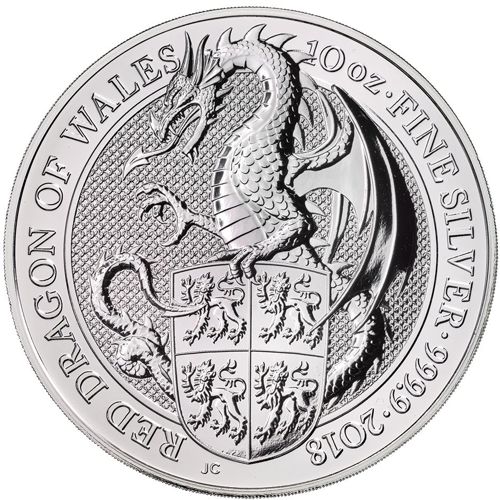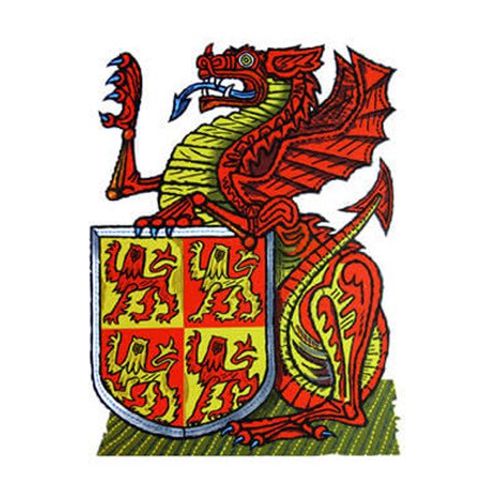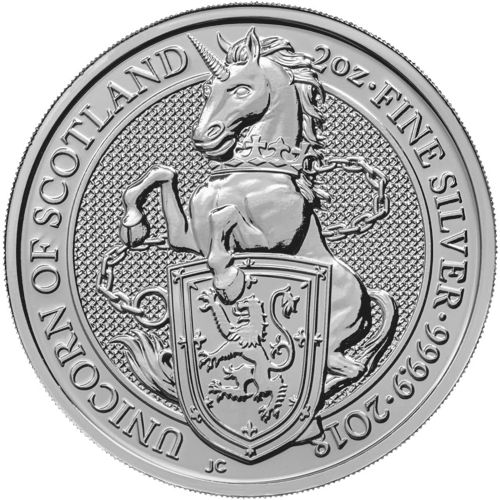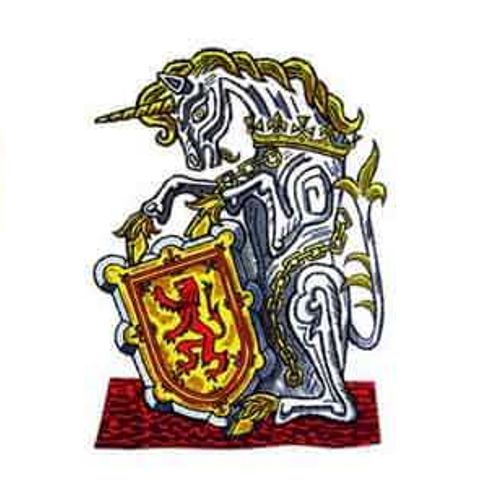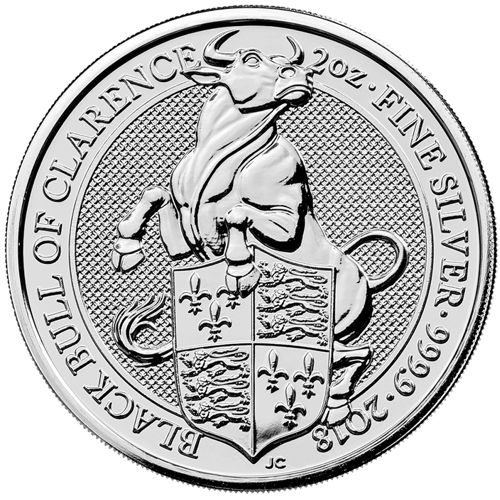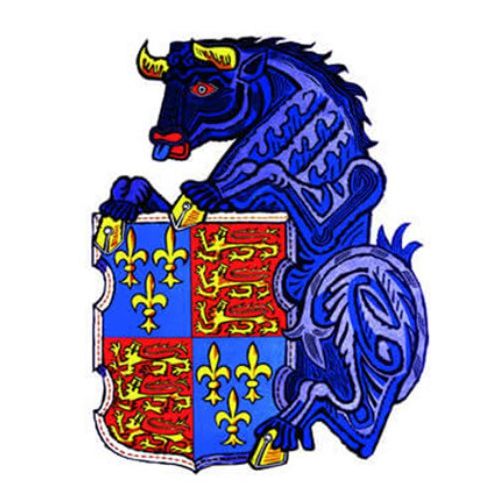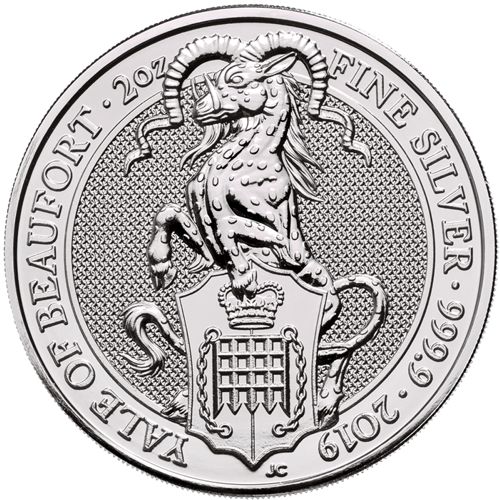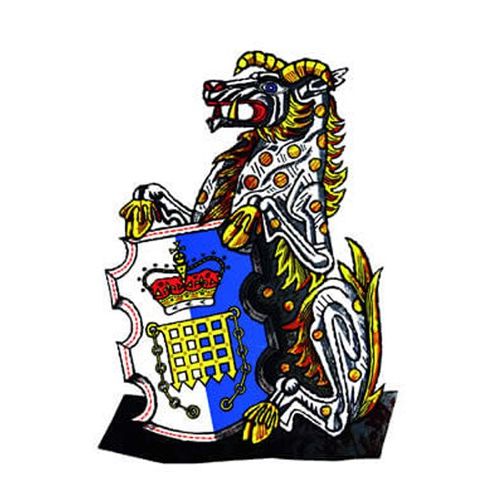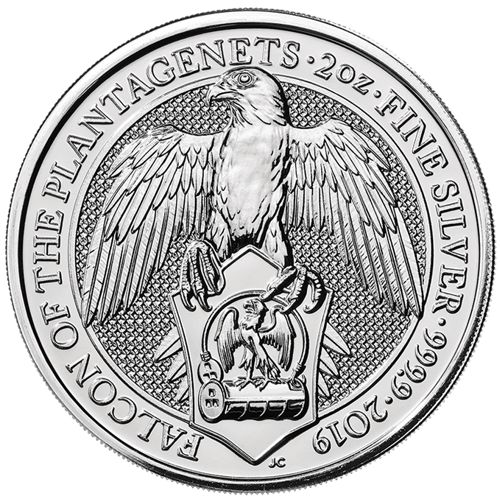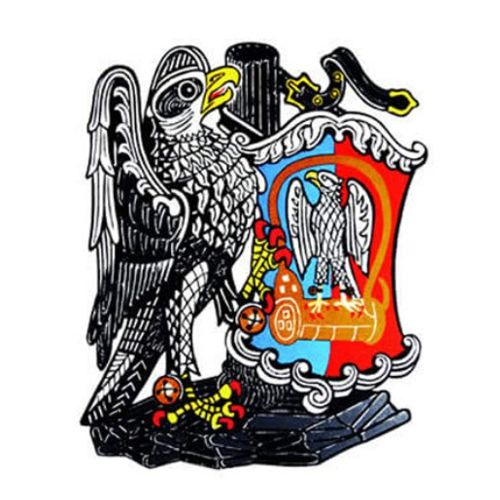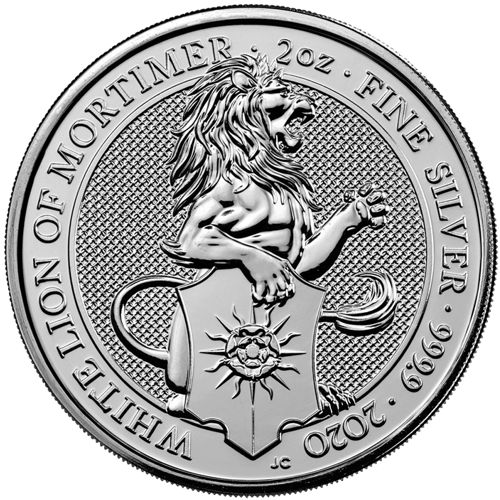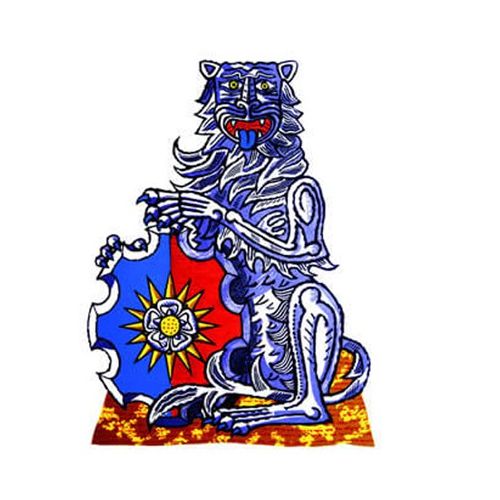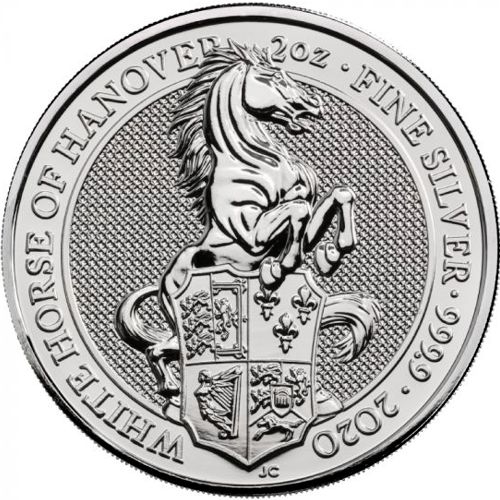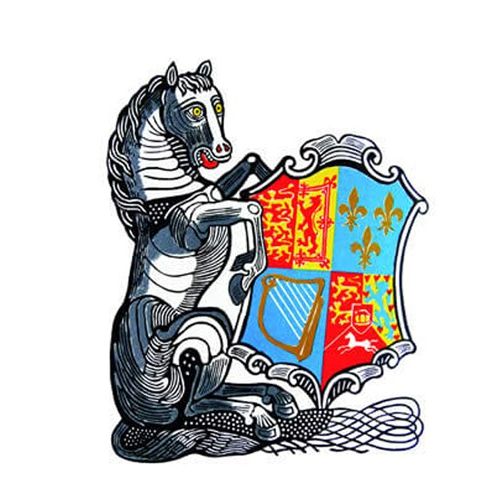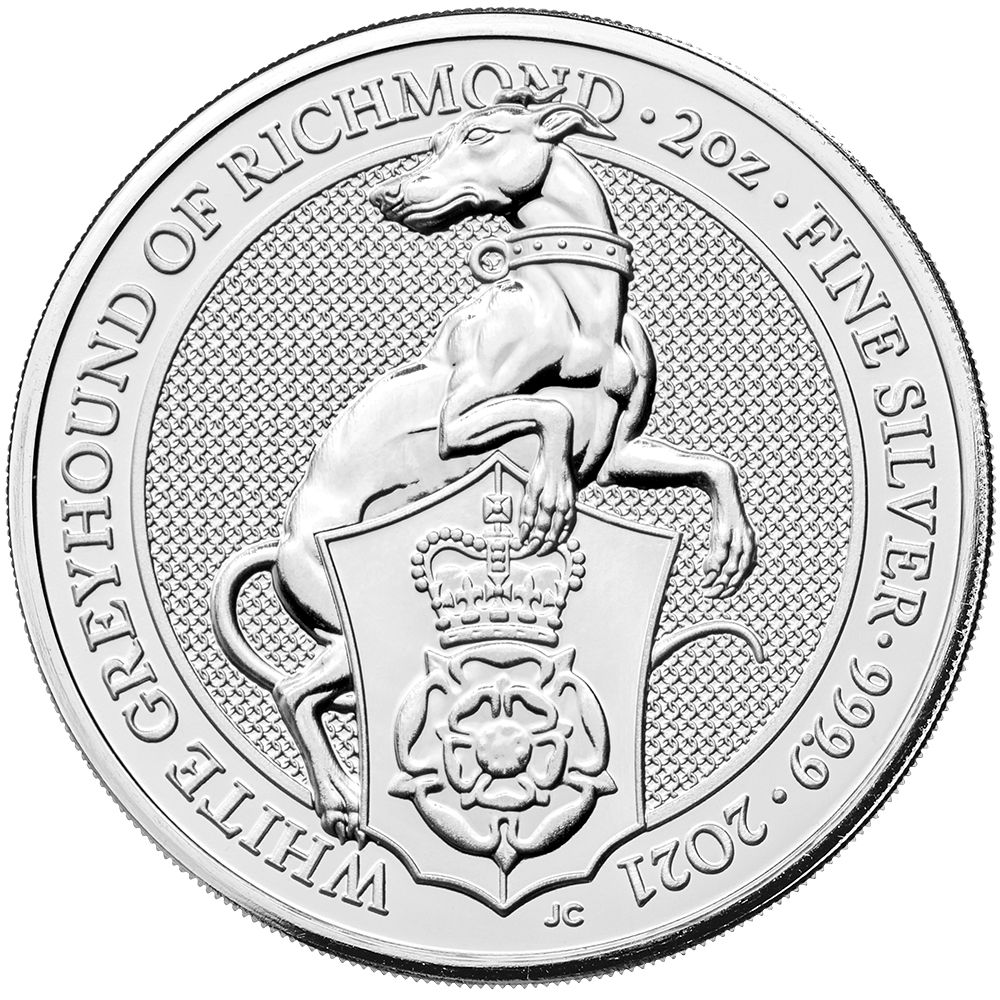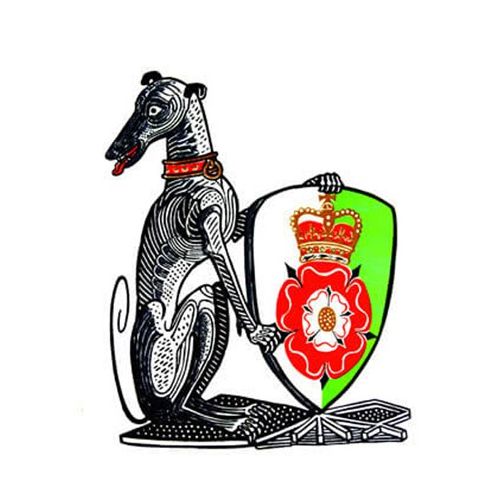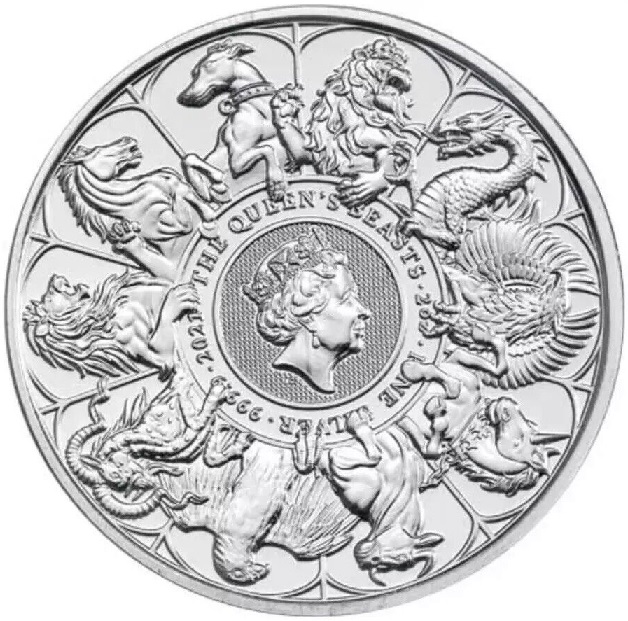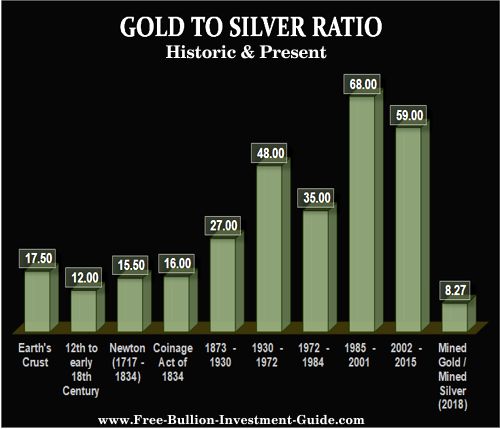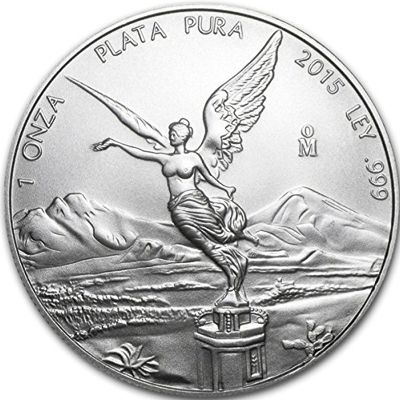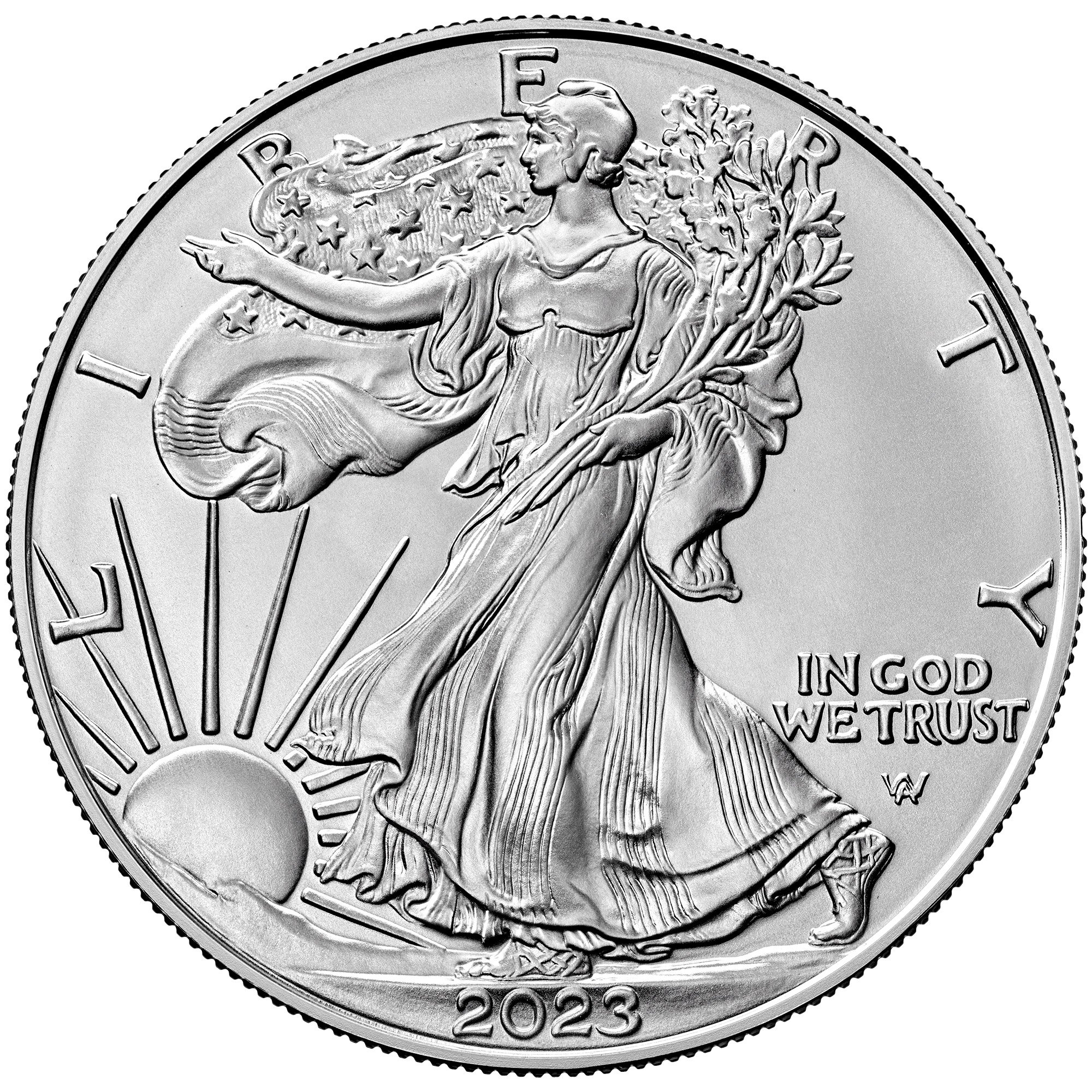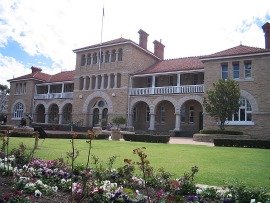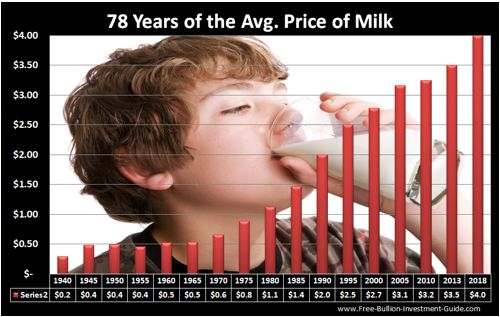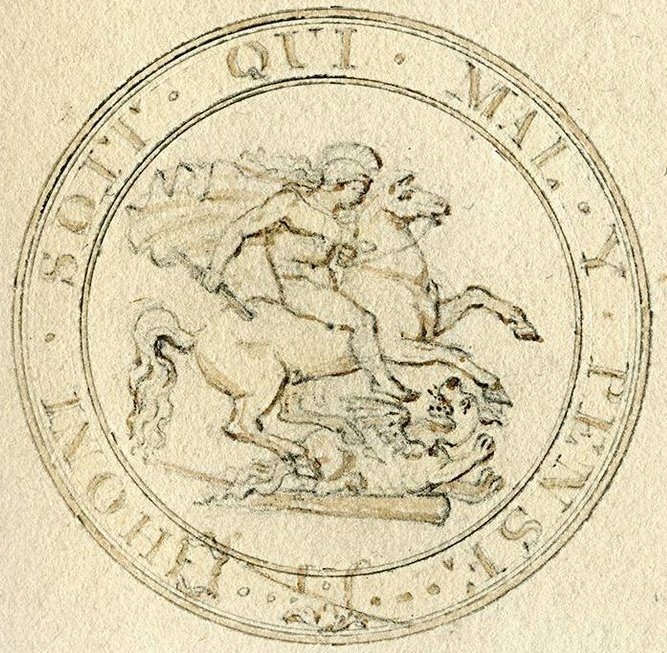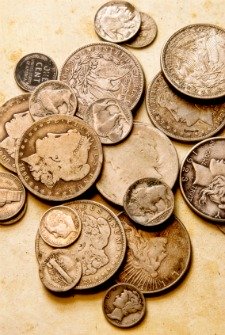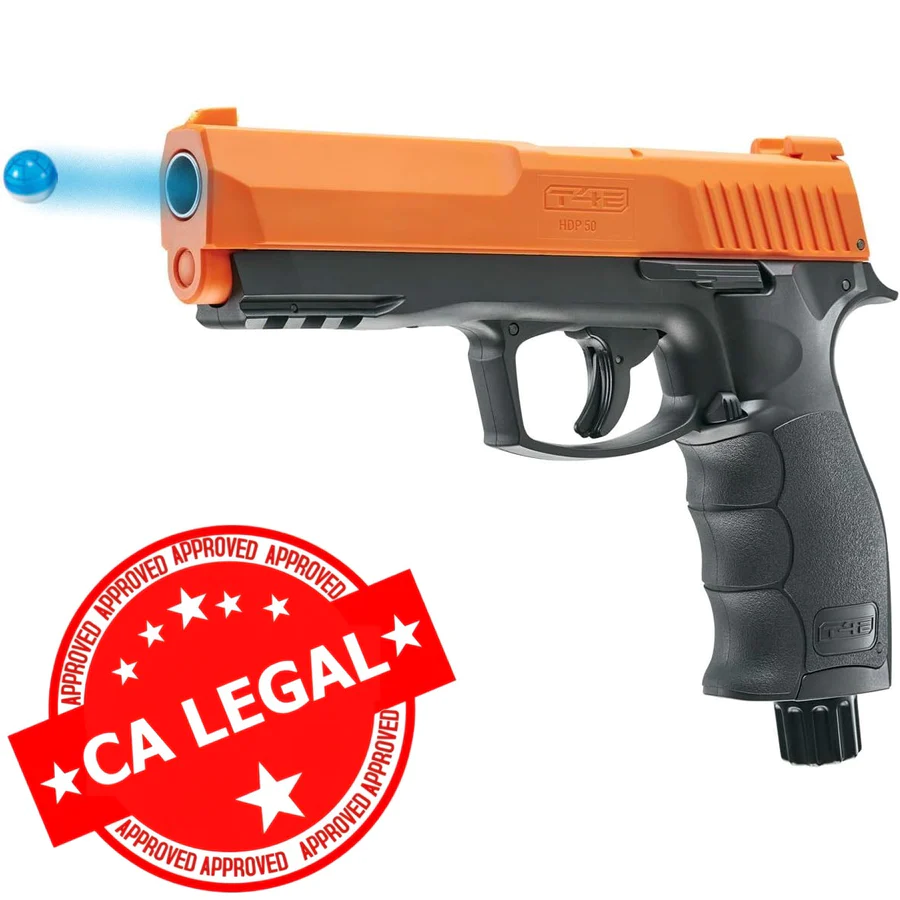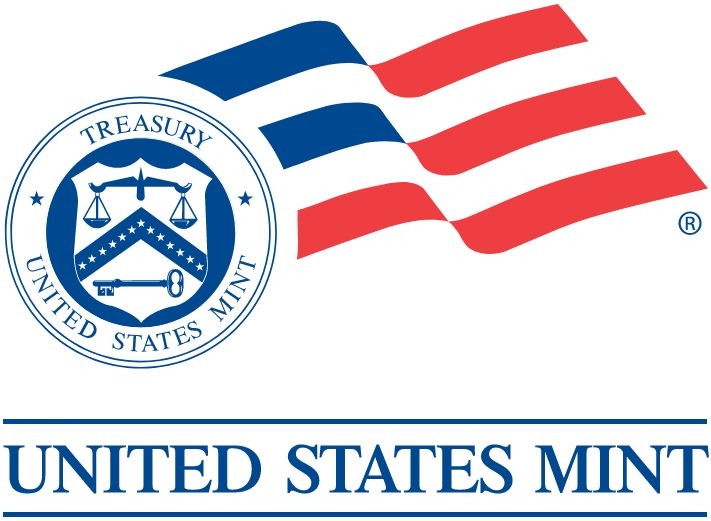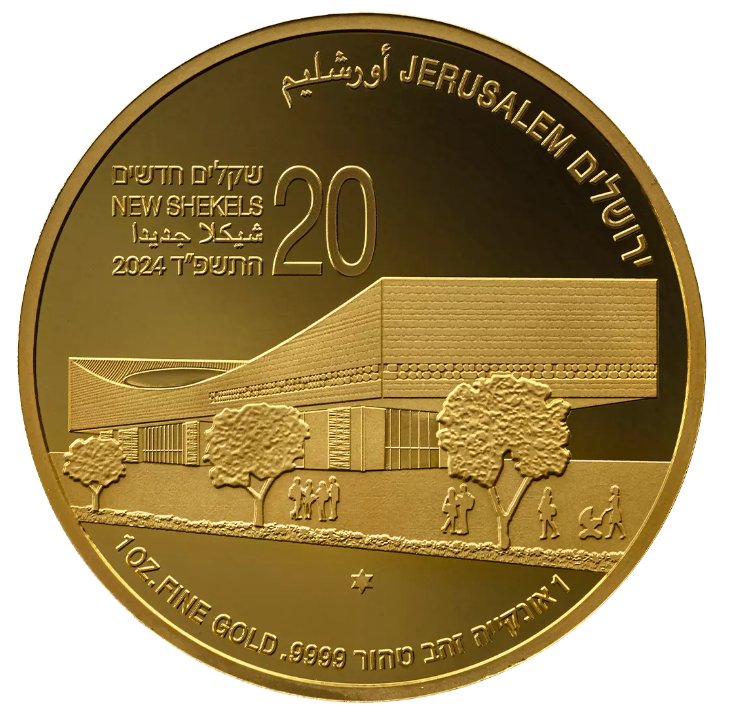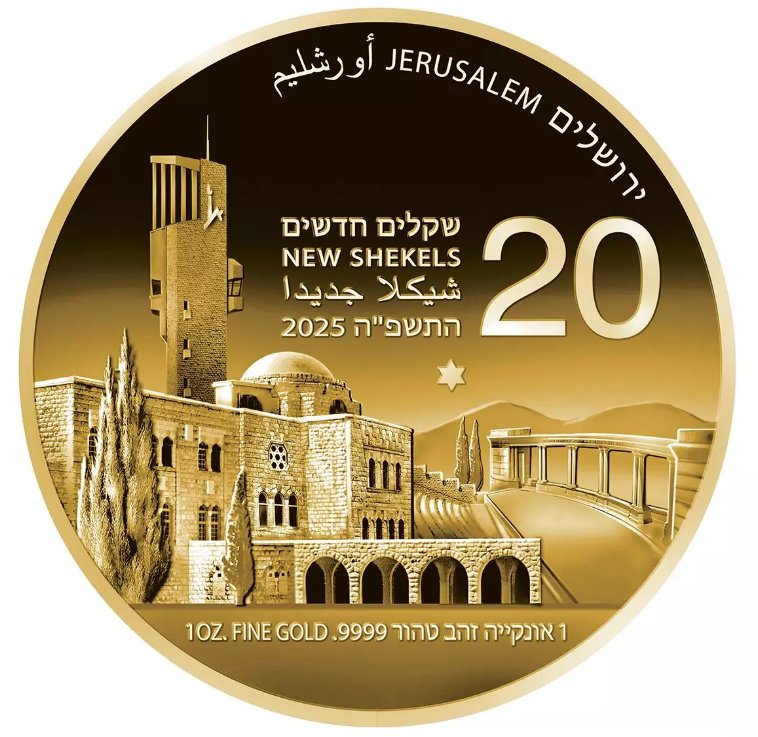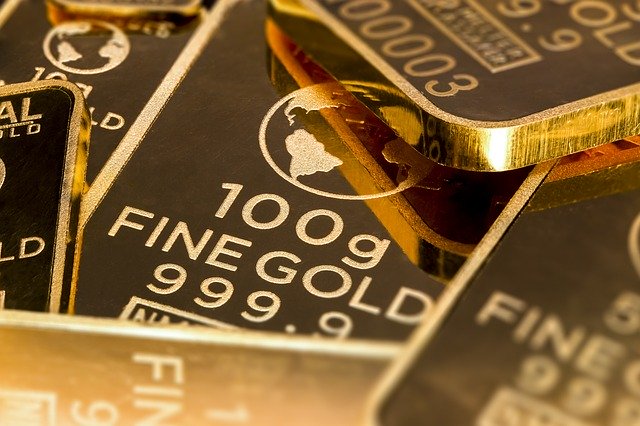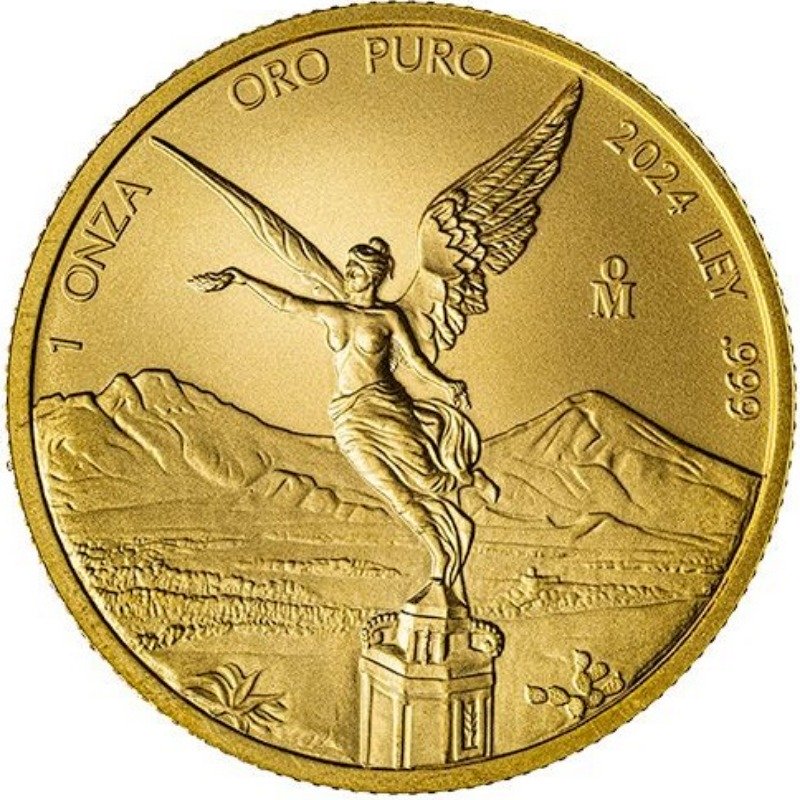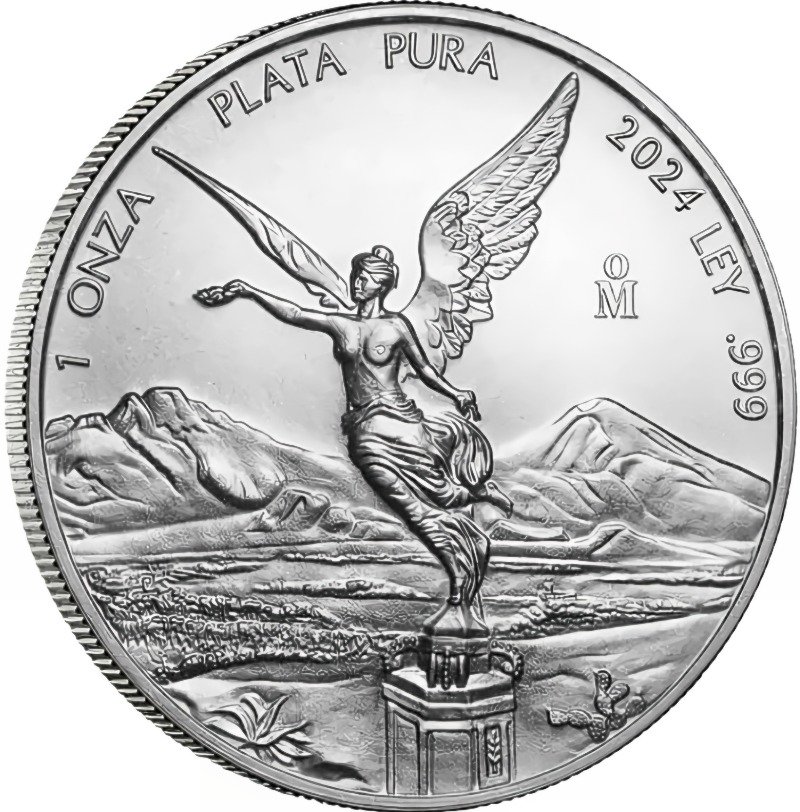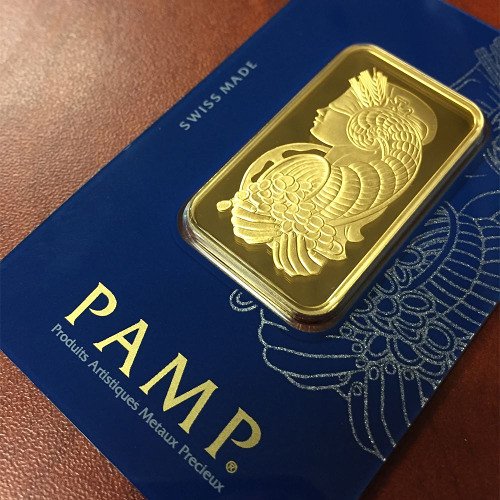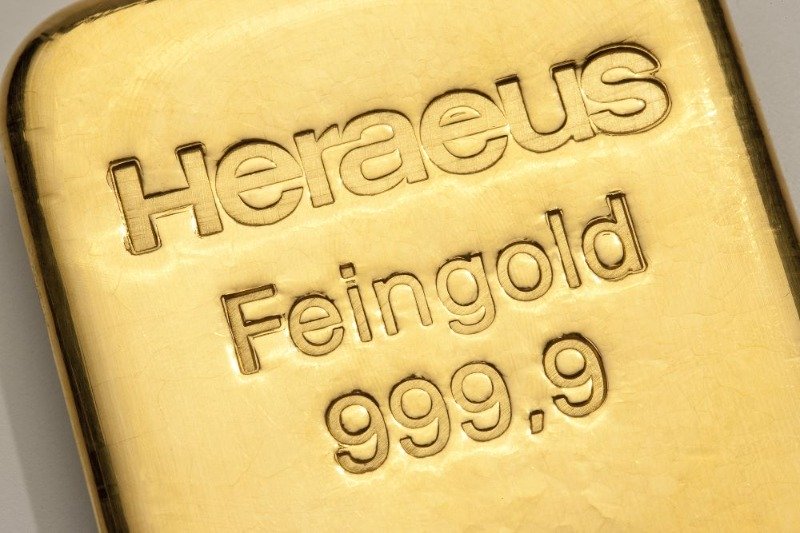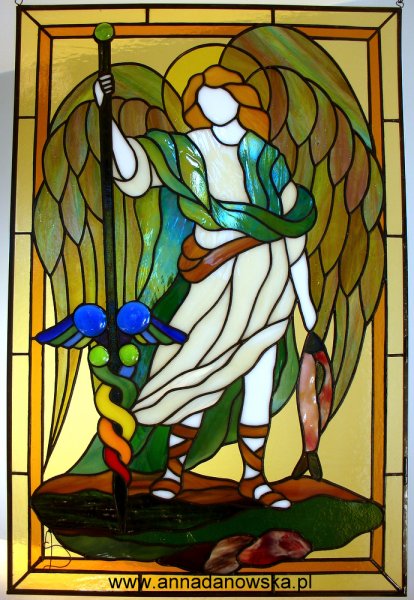Homepage / Bullion Coins: U.K. Coins / UK Queen's Beasts Silver

ExpressGoldCash - 4.9 star - Customer Reviews
Last Updated on 06/26/2024
UK Queen's Beasts
Silver Bullion Coin
2016 - 2021
The Royal Mint introduced the Queen's Beasts Silver and Gold Bullion Coins in 2016.
At Queen Elizabeth II's coronation in 1953, a statue of each of the ten heraldic beasts was present.
The Queen's Beasts consists of a heraldic beast supporting a shield bearing a badge or arms of a family associated with the ancestry of Queen Elizabeth II.
The Queen's Beasts names are listed below:
- The Lion of England
- The Griffin of Edward III
- The Red Dragon of Wales
- The Unicorn of Scotland
- The Black Bull of Clarence
- The Yale of Beaufort
- The Falcon of the Plantagenets
- The While Lion of Mortimer
- The White Greyhound of Richmond
- The White Horse of Hanover
British coin designer Jody Clark, known for creating the latest portrait of The Queen on U.K. coinage, has designed every one of the Queen's Beasts on the reverse side of the bullion coin.
One little-known fact that some UK residents are unaware of is that bullion coins from The Royal Mint are Tax-exempt from Capital Gains due to the coins' status as legal British currency, giving UK residents who purchase these coins added profit when they decide to sell.

Design of the Queen's Beasts
Silver Bullion Coin
Obverse
The obverse side of the 2 oz Queen's Beasts Silver bullion coin displays the portrait of Queen Elizabeth II, designed by Jody Clark.
Inscriptions:
- ELIZABETH II
- ∙ D ∙ G ∙ REG ∙ (stands for "Dei Gratia Regina," it is a Latin title meaning "By the Grace of God, Queen")
- ∙ F ∙ D ∙ (stands for "Fidei Defensor," which is a Latin title that translates into "Defender of the Faith") The phrases have been used regularly on British coinage since the 16th century.
- ∙ 5 POUNDS ∙
- JC (designer Jody Clark's initials below the Queen's neck)
Issued as legal tender, the bullion coin is guaranteed by the Government of the United Kingdom and is Tax-exempt from Capital Gains for "U.K. residents" due to the coins' status.
Obverse photo provided courtesy of the Royal Mint
Reverse
The reverse design of every one of the UK Queen's Beasts Bullion Coins is by Jody Clark.
The crowned golden 'Lion of England' was the first beast issued in the bullion coin series.
The Lion stands roaring over a shield bearing the Coat of Arms for the United Kingdom.
Inscriptions:
- LION OF ENGLAND ∙
- 2 OZ
- FINE SILVER ∙ 9999 ∙
- Year of Issue
- JC - designer Jody Clark initials below the shield
Reverse photo provided courtesy of the Royal Mint.
Edge
The Royal Mint produces the Queen's Beast Silver bullion coin with a reeded Edge.
The Royal Mint (UK) Delivery Rates • 4.8 star - Customer Reviews
2 oz. Queen's Beasts Silver
Coin Information
Introduction:................2016
IRA Apporved:..............Yes
Grade:.........................Uncirculated
Denomination:.............£5 GBP (5 pounds)
Silver Content:.............2 Troy oz.
Total Weight:...............62.20 grams
Purity:.........................99.99% / 999.9 per mille
Diameter:....................38.61mm
Designer:.....................Jody Clark (obverse & reverse)
Edge:...........................Reeded
Mintage:......................Unlimited
10 oz. Queen's Beasts Silver
Coin Information
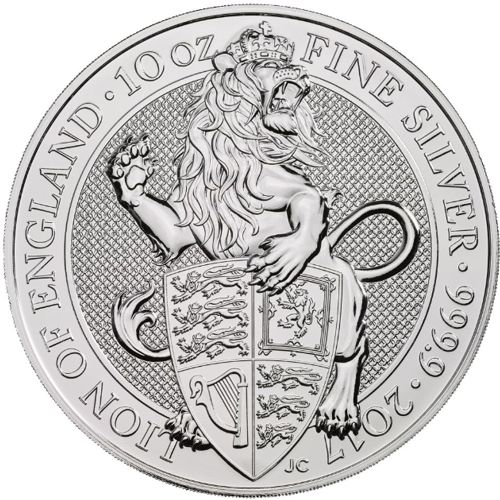
Introduction:.............2017
IRA Apporved:............Yes
Grade:.......................Uncirculated
Denomination:...........£10 GBP (10 pounds)
Gold Content:............10 Troy oz.
Total Weight:.............311 grams
Purity:.......................99.99% / 999.9 per mille
Diameter:..................89.00mm
Designer:...................Jody Clark (obverse & reverse)
Edge:.........................Reeded
Mintage:....................Unlimited
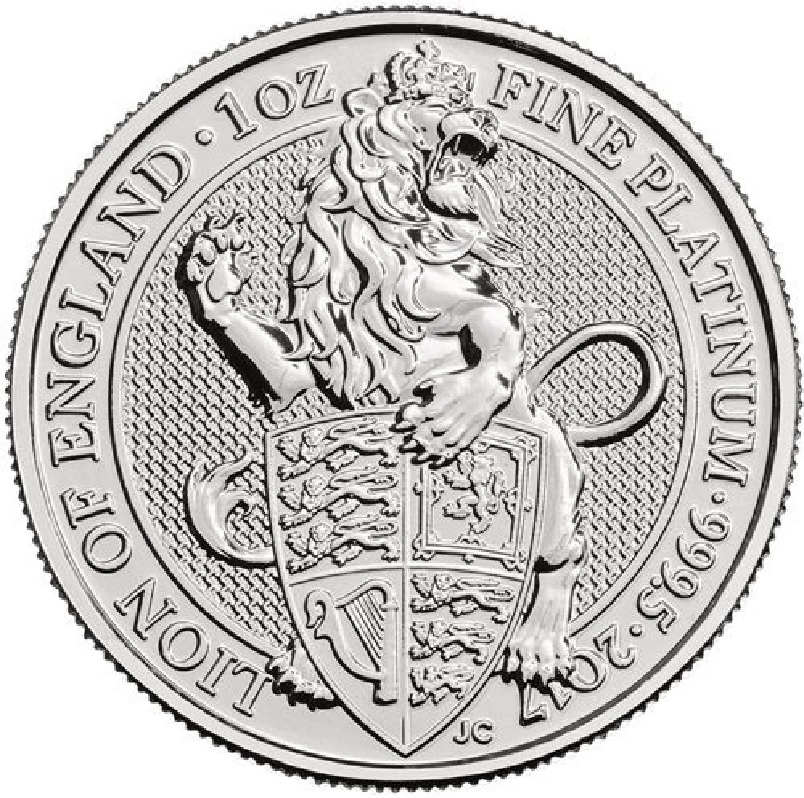
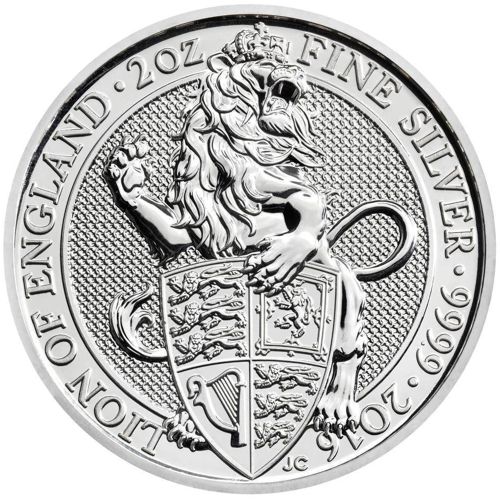
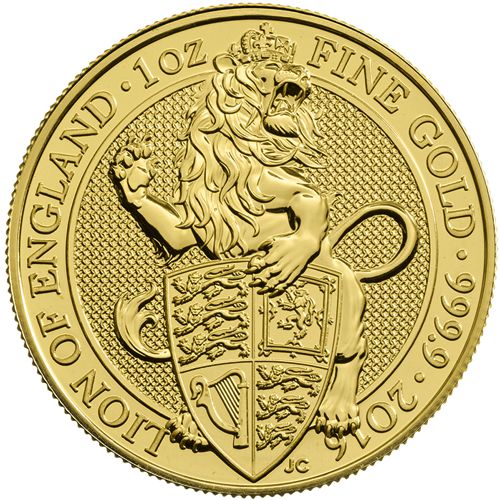

Purchase Queen's Beasts
Bullion Coins
from the Reputable Bullion Dealers below.
|
The Links below will take you directly to the page described. |
Free Shipping on Orders $199+
The Royal Mint (U.K.) Delivery Rates
Free Shipping on Orders $199+
Free Shipping on Orders $199+
America's Superstore offering Precious Metal Coins and Bars from Reputable Bullion Dealers
Shipping prices
vary by item
Notice
- This site receives a commission when you purchase from the merchants above.
- No Personal Information is Obtained by this guide when you visit or order from any of the merchants above.
- See this guide's Affiliate Disclosure page for more information: here)
Coins of the
UK Queen's Beasts
Silver Bullion Coin Series
2016 - Lion of England
The Lion of England:
As long as England has had a shield of its own, it has always
featured the lion in some form; which symbolizes bravery, strength, and
valor.
The Lion supports a shield showing the Arms of the United Kingdom as they have been since Queen Victoria's reign in 1837.
In the first and last quarters of the shield are the Lions of England, taken from the arms of Richard I, "The Lionheart" (1157–1199).
The Lion and tressure (armorial border) of Scotland appear in the second, and the harp of Ireland is in the third.
2017 - The Griffin of Edward III
The Griffin of Edward III:
The Griffin of Edward III is a fantastical beast, part eagle, part lion; considered a helpful creature, signifying courage and strength combined with guardianship, vigilance, swiftness, and keen vision.
It is associated with Edward III, who engraved it on his private seal and whose rule lasted for more than 50 years.
The shield shows the Round Tower of Windsor Castle (where Edward III was born) with the Royal Standard flying from the turret, enclosed by two branches of oak surmounted by the royal crown.
2018 - The Red Dragon of Wales
The Red Dragon of Wales:
The Red Dragon of the Queen’s Beasts was an emblem of Owen Tudor, a claim to Welsh heritage that his son carried, who would become Henry VII.
Dragons are one of the most recognizable mythical beasts; they are frightening but wise and dominating creatures.
The Dragon holds a shield bearing a Lion in each quarter; this was the coat of arms of Llywelyn ap Gruffudd, the last native Prince of Wales.
2018 - The Unicorn of Scotland
The Unicorn of Scotland:
Mythical tales about unicorns date back to 400 BC.
The unicorn is a symbol of elegance, grace, and purity and a beast that is hard to overcome.
From the end of the 16th century, two unicorns were adopted as supporters of the Scottish Royal Arms.
In 1603, the crown of England passed to James VI of Scotland, who then became James I of England.
He took as supporters of his Royal Arms a crowned lion of England and one of his Scottish unicorns.
The unicorn holds a shield showing the Royal Arms of Scotland, a lion ramping in a royal tressure adorned with fleur-de-lis.
2018 - The Black Bull of Clarence
The Black Bull of Clarence:
The Black Bull of Clarence is a ‘Yorkist’ beast that descended to the Queen through Edward IV, the first king of England from the House of York.
Seen as a symbol of strength, Edward IV used the Black Bull, as did his brother, Richard III, the last York king.
The shield has two quarters with the gold lions of England and two with the golden lilies.
2019 - The Yale of Beaufort
The Yale of Beaufort:
The Yale was a mythical beast, supposedly white and covered with gold spots, and able to swivel each of its horns independently.
It descends to the Queen through Henry VII, who inherited it from his mother, Lady Margaret Beaufort.
The Yale holds the shield with blue and white quarters of Margaret’s arms and a golden portcullis at the center, a badge used by Henry VII.
The portcullis is part of the arms of Westminster City Council, home to Westminster Abbey, where Queen Elizabeth II's coronation was in 1953.
2019 - The Falcon of the Plantagenets
The Falcon of the Plantagenets:
The Falcon, first used by Edward III of the House of Plantagenet as his badge, has since been passed down to Queen Elizabeth II.
Edward III chose the symbol to embody his love of hawking, also known as falconry.
When Henry VII married Elizabeth of York, he united the houses of York and Lancaster, known for using the falcon symbol regularly, which was also said to be a favorite badge of Queen Elizabeth I.
The Falcon holds a shield depicting a white falcon within an open golden ‘fetterlock.’
2020 - The White Lion of Mortimer
The White Lion of Mortimer:
The White Lion of Mortimer relates to the Queen through Edward IV, who inherited the creature from his grandmother, the heiress of the Mortimers.
Unlike the Lion of England, the White Lion of Mortimer has no crown. In heraldry, Lions stand with their front paws raised, but the Lion of Mortimer is shown sitting with its tail between its legs.
The shield has a white rose surrounded by a golden sun, known heraldically as a white rose en Soleil, a fusion of two separate emblems appearing on the Great Seals of Edward IV and Richard III.
The badge was also used by George VI, the Queen’s father, when he was Duke of York.
2020 - The White Horse of Hanover
The White Horse of Hanover:
The White Horse of Hanover was introduced into the Royal Arms in 1714 when the crown of Great Britain passed to the Elector George of Hanover.
This grandson of Elizabeth Stuart, sister of Charles I, became George I, King of Britain, France, and Ireland.
The shield shows the leopards of England and the lion of Scotland in the first quarter, the fleur-de-lis of France in the second, and the Irish harp in the third quarter. The fourth quarter shows the Arms of Hanover.
2021 - The White Greyhound of Richmond
The White Greyhound of Richmond:
The White Greyhound of Richmond was a badge of John of Gaunt, 1st Duke of Lancaster, Earl of Richmond, and 3rd son of King Edward III; it was also used by his son, King Henry IV, and especially by King Henry VII.
The Tudor double rose is on the shield; one rose within another, surmounted by a crown, symbolizes the union of the two cadet houses of Plantagenet—the House of York and the House of Lancaster.
King Henry VII used the White Greyhound throughout his reign.
2021 - Queen's Beasts Completer Coin
Queen's Beasts (Series) Completer Bullion Coin:
The Queen’s Beasts are ten legendary creatures who symbolize the historic ancestry of her late Majesty Queen Elizabeth II.
As a set of ten statues, each bearing the shield or crest of the family they represented, they stood guard outside Westminster Abbey in 1953 as the world watched Queen Elizabeth II’s coronation.
The Queen’s Beast mythical stories have been re-imagined for the twenty-first century in a series of ten popular coin designs by the celebrated designer Jody Clark.
You can now own the Queen's Beasts Completer Bullion Coin, in gold, silver, or platinum, which features all ten Queen’s Beasts surrounding the Queen's profile.

ExpressGoldCash - 4.9 star - Customer Reviews
Other pages you may like...
|
|
|
|
|
|

SD Bullion - 4.8 star Customer Reviews
UK Queen's Beasts Silver Bullion Coins
OR
For Bullion Market News...
Notice:
The charts, commentary, and information on the Free-Bullion-Investment-Guide.com are not meant to encourage you to invest or divest in any particular way.
|
Support this Guide & Paypal Thank You for Your Support |
|
|
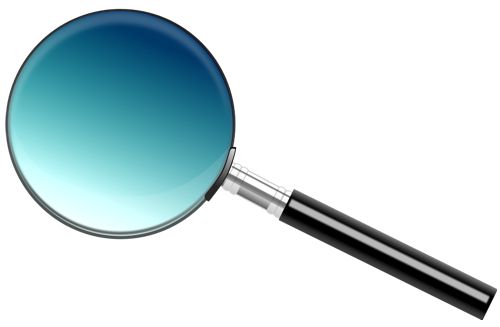 | |||||

This website is best viewed on a desktop computer.
Keep this Guide Online
& Paypal
Thank You for
Your Support
with Feedly
Search the Guide
| search engine by freefind | advanced |
Premium Canadian Bullion

Give a lasting gift of the iconic Silver Maple Leaf bullion coin [More]
Free Shipping on Orders over $100 (CDN/USA)
or
From the U.K. Royal Mint
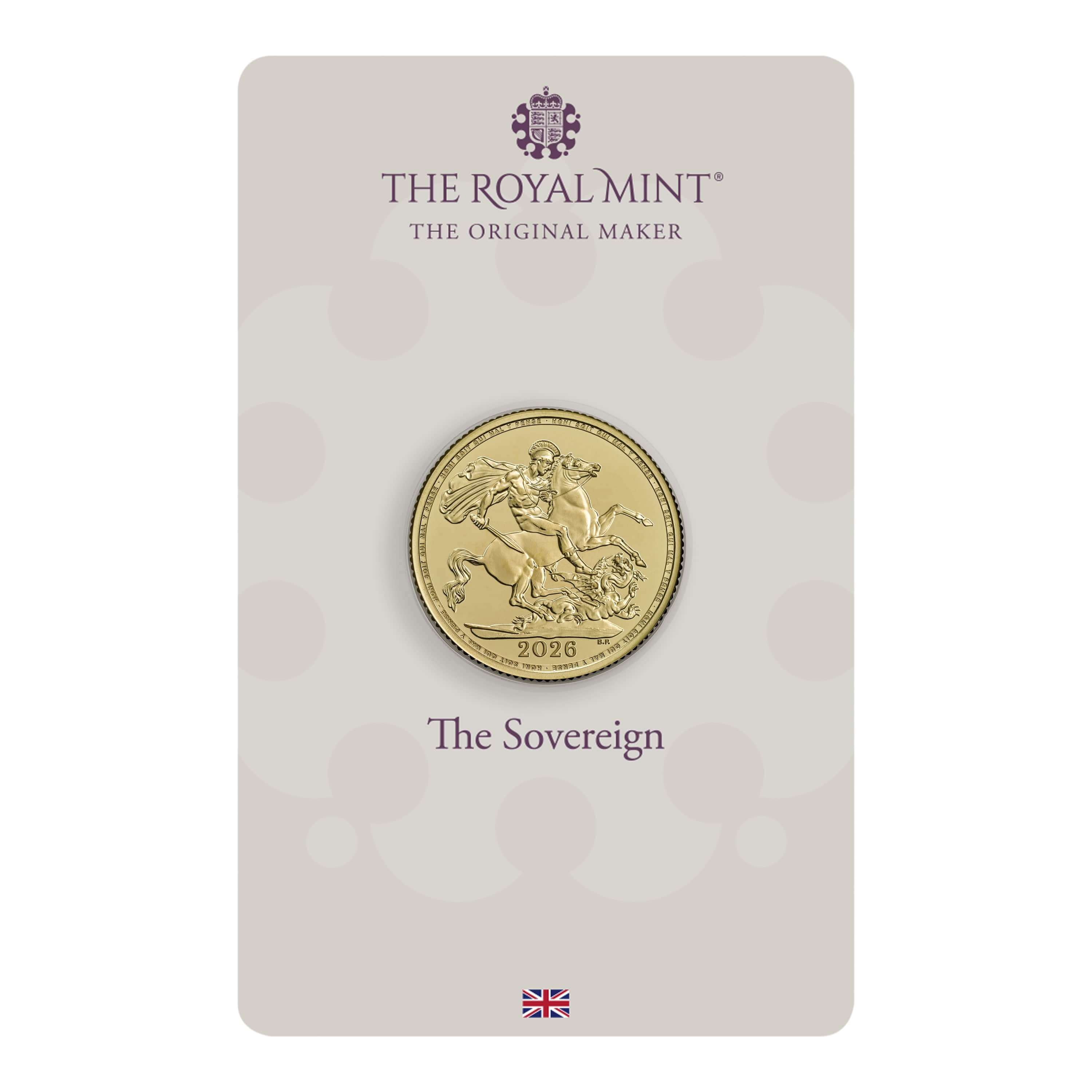
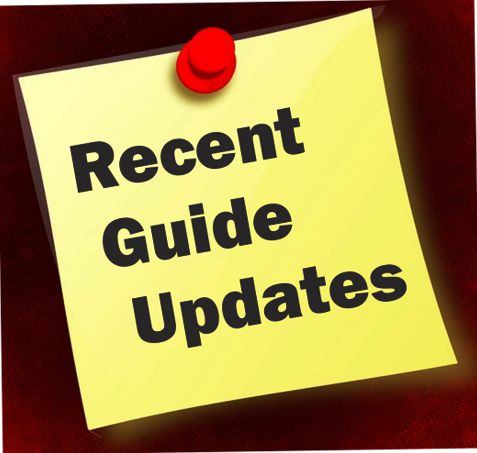
Daily
Newsletter
Updated Mintages for
American Gold Buffalo
American Gold Eagle
American Silver Eagle
2024 & 2025
Jerusalem of Gold Bullion
Coin photos
(bottom of page)
Mintages
for
2024
Gold & Silver Mexican Libertad
|
Gold Libertads |
Chinese Gold Coin Group Co.
& Chinese Bullion
Help Us Expand our Audience by forwarding our link
www.free-bullion-investment-guide.com.
Thank You!
Last Month's

In No Particular Order
November 2025
All Articles were Originally Posted on the Homepage




ExpressGoldCash - 4.9 star Customer Reviews



18W LED Security Light (Dusk to Dawn & Motion Sensor) - $32.99
from:
 LED Lighting
LED Lighting
